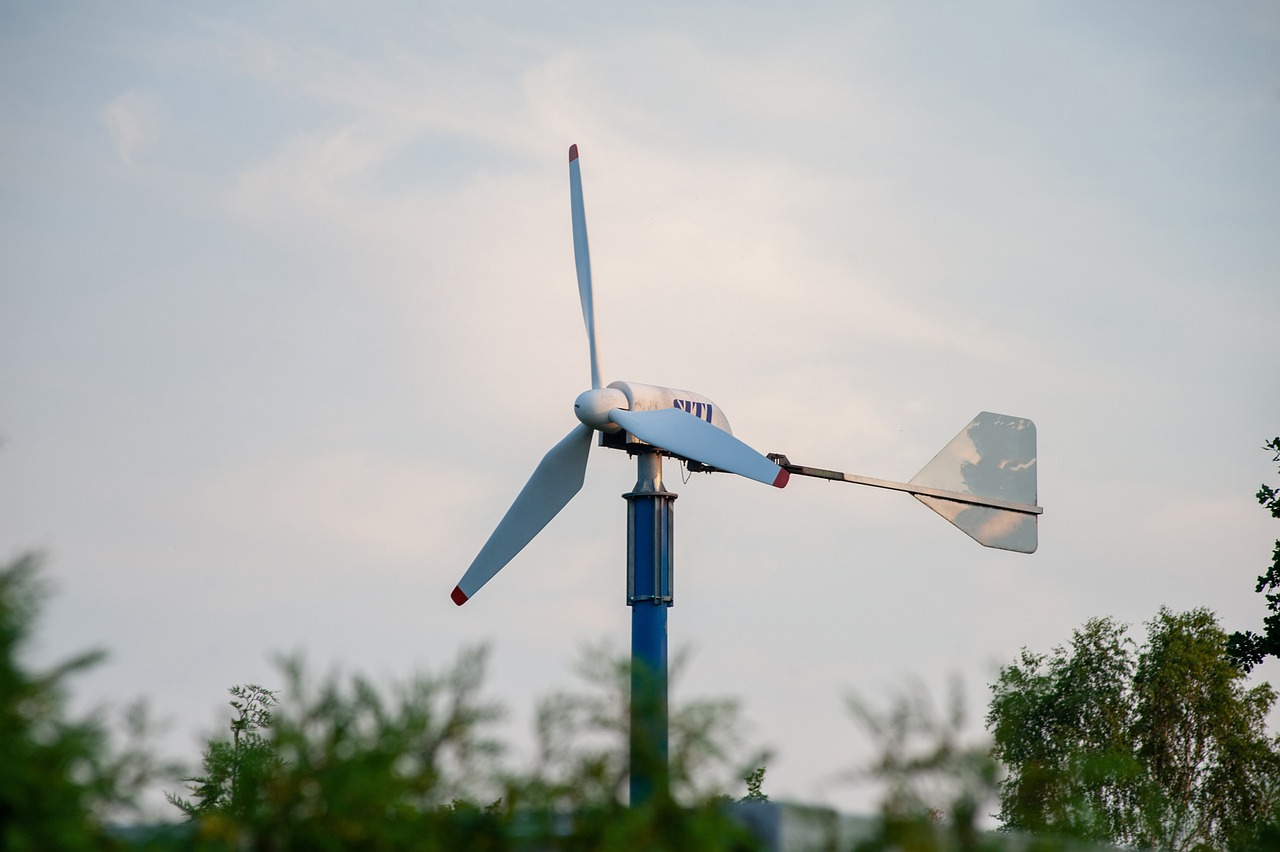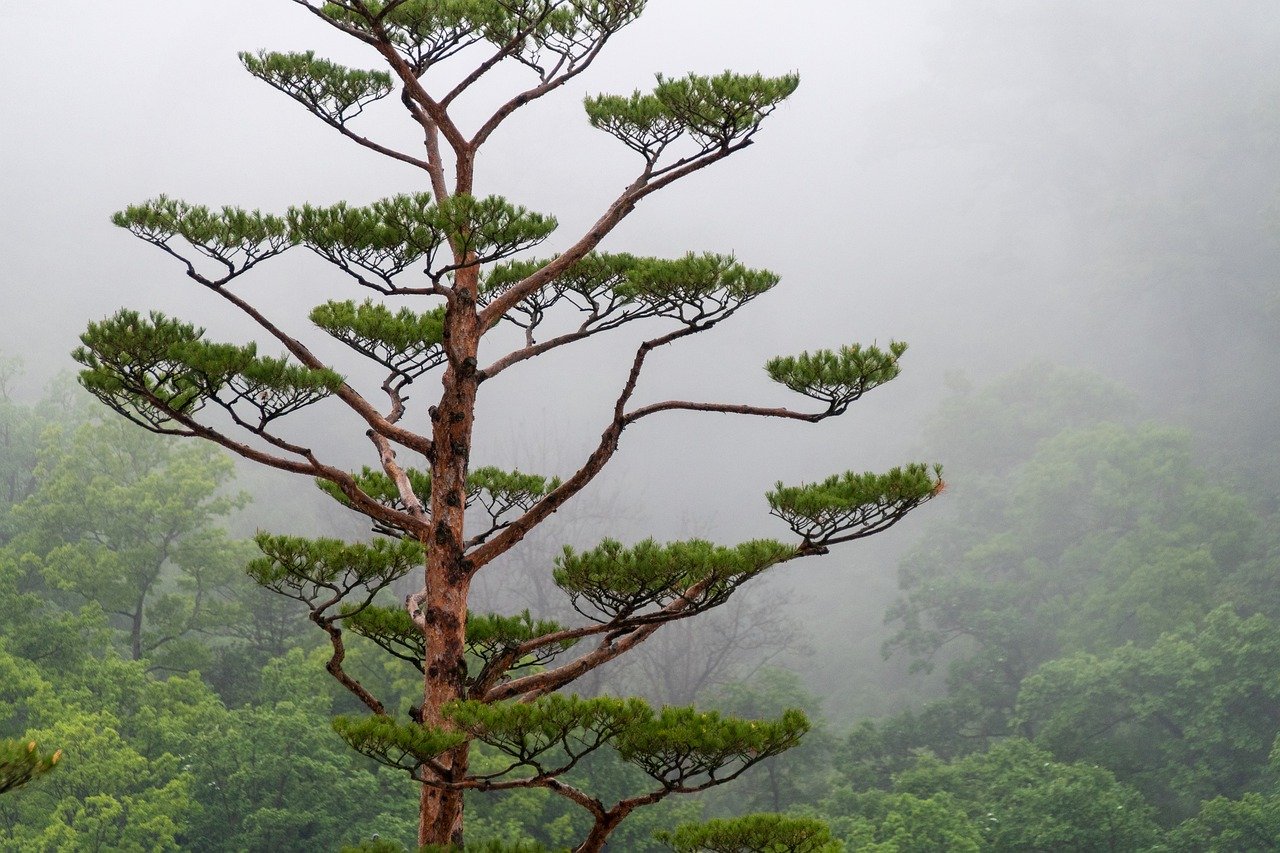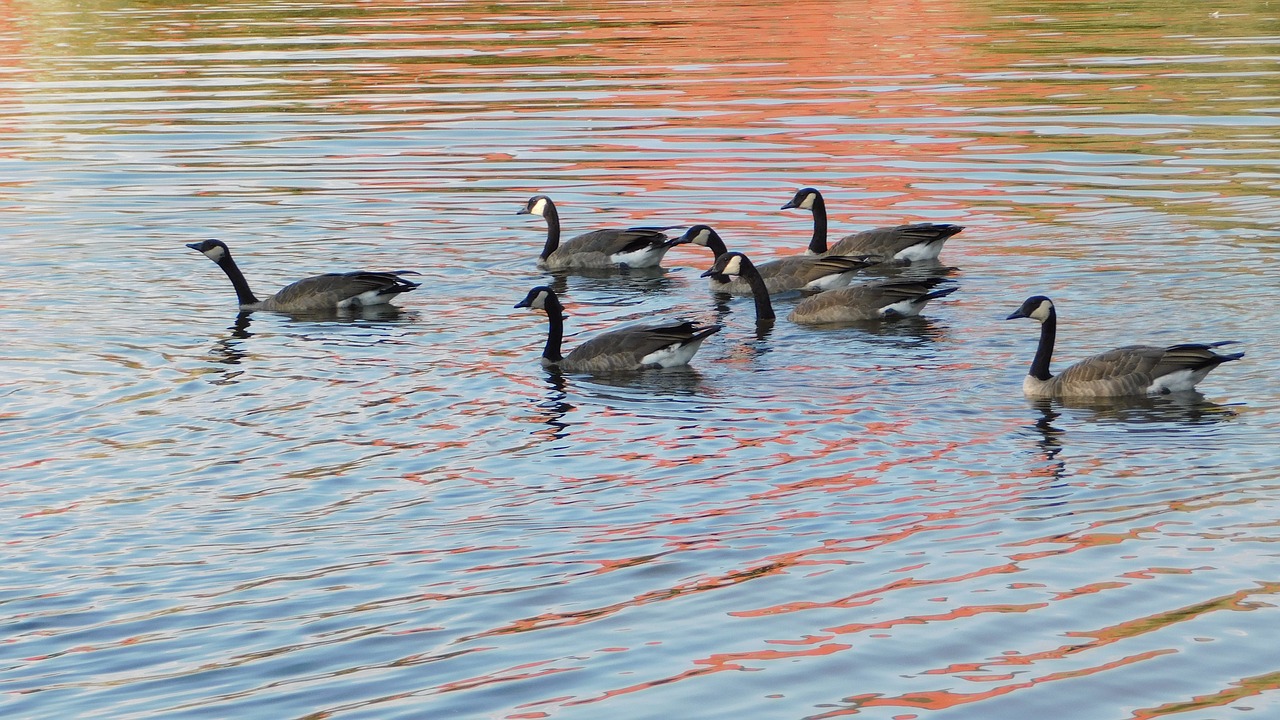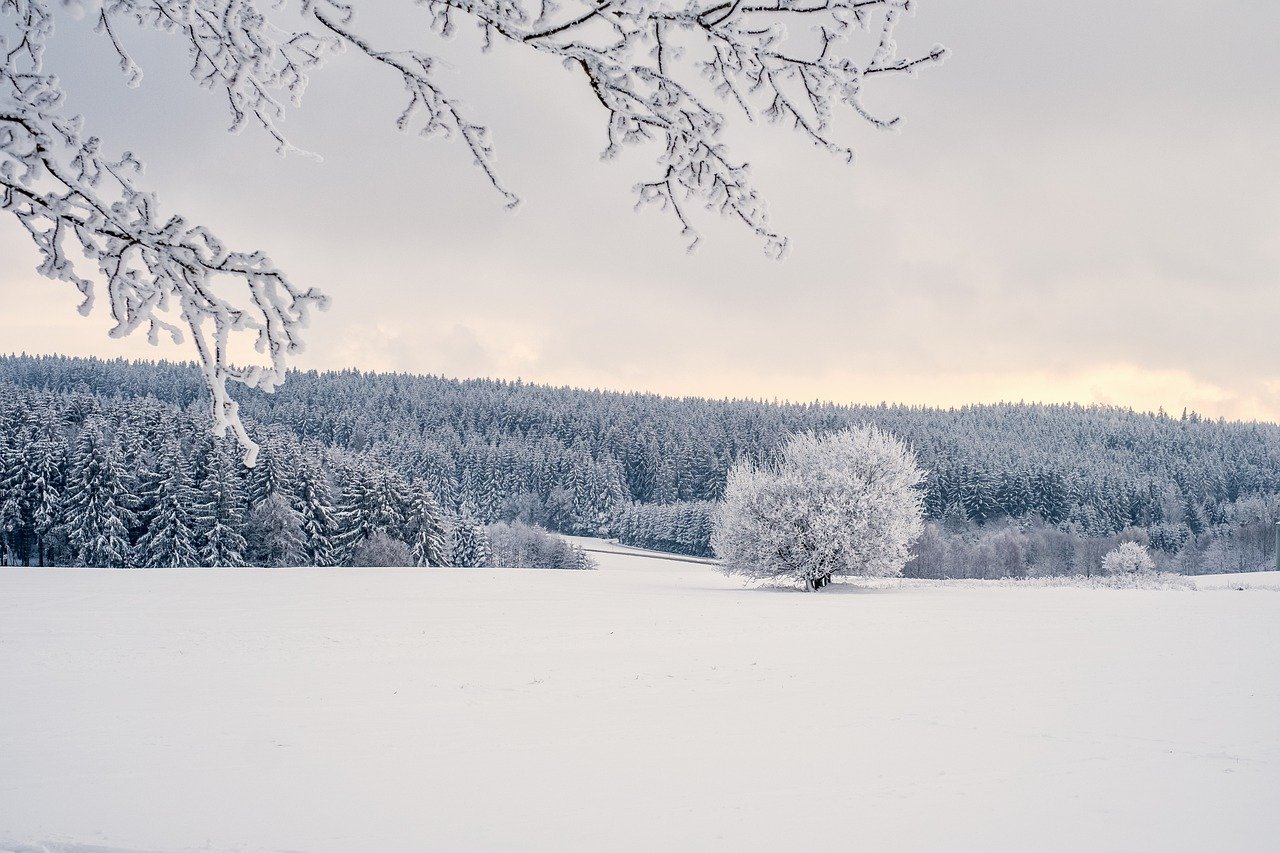Key Features of a Sustainable Eco-Friendly Landscape
Creating a sustainable eco-friendly landscape is like crafting a masterpiece that not only beautifies your surroundings but also nurtures the environment. Imagine stepping into a space where every plant, every stone, and every drop of water has a purpose. This is the essence of a sustainable landscape: a harmonious blend of aesthetics and ecological responsibility. By incorporating practices that enhance environmental health and promote biodiversity, we can create spaces that are not just visually appealing but also beneficial to the planet.
At the heart of this endeavor lies the principle of native plant selection. Choosing plants that are naturally adapted to your local climate and soil conditions is crucial. These native species are often more resilient, requiring less water and being less susceptible to local pests. By planting native flora, you create a self-sustaining ecosystem that attracts local wildlife, from bees to butterflies, enriching the biodiversity of your landscape.
Equally important is soil health management. Healthy soil is the foundation upon which all thriving landscapes are built. Practices such as composting, mulching, and using organic amendments can significantly enhance soil fertility. This not only improves water retention but also fosters a thriving community of beneficial microorganisms that are essential for robust plant growth. Think of soil as the lifeblood of your garden; without it, nothing can flourish.
Water conservation techniques play a vital role in maintaining eco-friendly landscapes. Implementing strategies like rain gardens, drip irrigation, and xeriscaping can drastically reduce water usage while keeping your garden lush and vibrant. A rain garden, for instance, not only captures stormwater but also filters pollutants, contributing to a healthier watershed. It’s like giving nature a helping hand to manage its resources wisely.
Another key feature is biodiversity promotion. A landscape rich in variety is more resilient and better equipped to withstand environmental changes. By incorporating a diverse array of plants, creating different habitats, and adding wildlife-friendly features, you can support various species and enhance the ecological balance. Think of your landscape as a mini-ecosystem, where every element plays a vital role in the overall health of the environment.
Waste reduction practices are also essential in sustainable landscaping. Utilizing recycled materials, composting organic waste, and minimizing chemical inputs can significantly reduce your ecological footprint. By embracing these practices, you not only contribute to a healthier environment but also inspire others to follow suit. It's a ripple effect that starts with you!
Creating wildlife habitats within your landscape is another powerful way to promote sustainability. Incorporating features like birdhouses, bee hotels, and native plant gardens can provide essential habitats for various species. Imagine turning your garden into a sanctuary where birds sing, bees buzz, and butterflies flutter—it's not just a garden; it's a thriving ecosystem!
Furthermore, employing organic pest management strategies is critical for minimizing harmful chemicals in your landscape. Methods such as companion planting, introducing natural predators, and using organic pesticides can promote plant health while safeguarding the ecosystem. It’s like being a guardian of your garden, ensuring that it remains a safe haven for all living creatures.
Energy efficiency in landscape design cannot be overlooked. Strategic planting of trees and shrubs can provide shade, create windbreaks, and help regulate temperatures around buildings. This not only reduces energy costs but also minimizes the environmental impact of heating and cooling systems. Think of it as nature’s air conditioning, working tirelessly to keep your home comfortable.
Lastly, community involvement and education are vital in fostering a culture of sustainability. Engaging the community in sustainable landscaping practices raises awareness and encourages collective action. Educational programs and workshops can empower individuals to adopt eco-friendly practices in their own gardens, creating a network of environmentally-conscious citizens. It’s about building a community that cares for the planet together.
- What are native plants, and why are they important?
Native plants are species that naturally occur in a specific region. They are important because they require less maintenance, are adapted to local conditions, and support local wildlife. - How can I improve my soil health?
You can improve soil health by adding organic matter, such as compost and mulch, and avoiding chemical fertilizers that can harm beneficial microorganisms. - What are some effective water conservation techniques?
Effective techniques include rain gardens, drip irrigation, and xeriscaping, which all help to reduce water usage while maintaining a healthy landscape. - How can I create a wildlife-friendly garden?
To create a wildlife-friendly garden, incorporate native plants, provide habitats like birdhouses and bee hotels, and avoid using harmful pesticides.

Native Plant Selection
This article explores the essential elements that contribute to creating a sustainable eco-friendly landscape, highlighting practices that promote environmental health and biodiversity while enhancing aesthetic appeal.
Choosing native plants is crucial for sustainability. These plants are adapted to the local climate and soil conditions, which means they require significantly less water than non-native species. Imagine trying to thrive in a foreign land without knowing the local customs; that's what non-native plants face when introduced to a new environment. Native plants, on the other hand, are like locals—they know exactly how to flourish with minimal resources.
Moreover, native plants are more resistant to local pests and diseases. This natural resilience reduces the need for chemical pesticides, making your garden a safer haven for both humans and wildlife. By planting species that are already part of the local ecosystem, you create a harmonious environment that supports local wildlife, including birds, bees, and butterflies. These creatures rely on native plants for food and shelter, thus fostering a thriving ecosystem.
Incorporating a variety of native species can enhance the visual appeal of your landscape. For example, a garden filled with vibrant wildflowers and lush greenery can be as stunning as any exotic plant collection. Not only do these plants provide beauty, but they also play a vital role in maintaining ecological balance. By selecting plants that bloom at different times throughout the year, you can ensure that your garden is alive with color and activity across all seasons.
To help you get started with native plant selection, consider the following key benefits:
- Low Maintenance: Once established, native plants require less care, saving you time and effort.
- Water Efficiency: They are adapted to local rainfall patterns, reducing the need for irrigation.
- Wildlife Support: Native plants provide food and habitat for local wildlife, promoting biodiversity.
- Soil Health: They help improve soil structure and health, benefiting the entire ecosystem.
When planning your native garden, it's essential to research the specific plants that thrive in your area. Local extension services or native plant societies can provide valuable resources and guidance. Consider factors such as soil type, sunlight exposure, and moisture levels to ensure that your chosen plants will thrive.
In conclusion, selecting native plants is not just a trend; it's a commitment to fostering a sustainable environment. By making informed choices, you can create a beautiful landscape that not only enhances your property but also supports the ecosystem around you. So, why not take the plunge and embrace the beauty and benefits of native plants in your landscaping efforts?
Q: What are native plants?
A: Native plants are species that naturally occur in a specific region or ecosystem without human intervention. They are adapted to local environmental conditions.
Q: Why should I choose native plants for my garden?
A: Native plants require less water, are more resistant to local pests, and support local wildlife, making them ideal for sustainable landscaping.
Q: How can I find native plants suitable for my area?
A: You can consult local extension services, native plant societies, or gardening centers that specialize in native flora to find suitable plants for your region.
Q: Do native plants require special care?
A: Once established, native plants generally require less maintenance than non-native species. However, they may need some care during their initial growth period.

Soil Health Management
When it comes to creating a sustainable eco-friendly landscape, is not just important; it's absolutely essential. Think of soil as the backbone of your garden. Without healthy soil, your plants are like a house built on sand—unstable and likely to collapse. So, what can you do to ensure your soil is thriving? The answer lies in a few key practices that not only enhance soil fertility but also promote a vibrant ecosystem.
One of the most effective ways to improve soil health is through composting. By recycling organic waste—like kitchen scraps and yard waste—into nutrient-rich compost, you can significantly boost the soil's fertility. This natural fertilizer enriches the soil, encourages beneficial microorganisms, and helps retain moisture. Imagine your garden soil as a sponge; the more nutrients and organic matter it holds, the more water it can absorb, leading to healthier plants.
Another practice that plays a vital role in soil health is mulching. Applying a layer of organic mulch, such as wood chips or straw, not only suppresses weeds but also regulates soil temperature and moisture. This is particularly beneficial during extreme weather conditions, where hot summers or cold winters can stress your plants. Mulch acts like a cozy blanket for your soil, keeping it warm in winter and cool in summer.
Additionally, consider using organic amendments to boost soil health. Materials like worm castings, bone meal, and green manure can enhance nutrient levels and improve soil structure. These amendments are like a multivitamin for your garden, providing essential nutrients that help plants thrive. Regularly testing your soil can also guide you in selecting the right amendments for your specific needs.
It's also vital to promote beneficial microorganisms in the soil. These tiny organisms play a huge role in breaking down organic matter, making nutrients available for plants. Practices such as reducing tillage and avoiding harmful chemicals can help maintain a healthy population of these microorganisms. Think of them as the unsung heroes of your garden, working tirelessly beneath the surface to support plant growth.
Incorporating cover crops is another fantastic way to manage soil health. These plants, grown during the off-season, protect the soil from erosion, suppress weeds, and add organic matter back into the soil when tilled under. Cover crops are like a protective shield for your garden, ensuring that the soil remains rich and fertile, ready for planting when the time comes.
In summary, managing soil health is a multifaceted approach that requires attention and care. By implementing practices like composting, mulching, using organic amendments, and promoting beneficial microorganisms, you can create a robust foundation for your sustainable landscape. After all, a thriving garden starts with healthy soil, and investing in its health pays off in the form of vibrant, resilient plants that can withstand the tests of time and nature.
- What are the signs of unhealthy soil? Unhealthy soil may appear compacted, dry, or lacking in organic matter. You might notice poor plant growth or increased pest problems.
- How often should I test my soil? It's advisable to test your soil at least once a year to monitor nutrient levels and pH balance.
- Can I use chemical fertilizers instead of organic amendments? While chemical fertilizers can provide quick nutrients, they often harm beneficial microorganisms and degrade soil health over time.
- What types of cover crops are best for my garden? The best cover crops depend on your region and soil needs, but common options include clover, vetch, and rye.

Water Conservation Techniques
When it comes to creating a sustainable eco-friendly landscape, water conservation is not just a luxury; it's a necessity. With changing climate patterns and increasing water scarcity, utilizing effective water-saving strategies can make a significant difference. Imagine your garden thriving with lush plants while using minimal water—sounds like a dream, right? Well, it's entirely possible with a few innovative techniques!
One of the most effective methods is the implementation of rain gardens. These specially designed areas capture and absorb rainwater runoff from impervious surfaces like driveways and roofs. By allowing water to seep into the ground, rain gardens not only reduce the risk of flooding but also filter pollutants, improving water quality. Think of them as nature's way of recycling water! A well-placed rain garden can be a beautiful focal point in your landscape while serving a practical purpose.
Another technique to consider is drip irrigation. Unlike traditional sprinklers that spray water indiscriminately, drip irrigation delivers water directly to the roots of your plants. This method minimizes evaporation and runoff, ensuring that every drop counts. You can think of it as a targeted approach to watering, much like a doctor prescribing medication directly to where it's needed most. Installing a drip irrigation system might require some initial investment, but the long-term savings on your water bill and the health of your plants will be worth it!
Then there's xeriscaping, a landscaping method that emphasizes drought-resistant plants and minimal irrigation. By choosing native and drought-tolerant plants, you create a landscape that flourishes even in dry conditions. Not only does xeriscaping reduce the need for watering, but it also provides a unique aesthetic that celebrates the natural beauty of your region. Picture a vibrant garden filled with colorful succulents and hardy perennials that thrive on the sun's rays instead of your garden hose!
To further enhance your water conservation efforts, consider implementing a rainwater harvesting system. This system collects rainwater from roofs and stores it in barrels or cisterns for later use. You can use this stored water for irrigation or even for washing your car. It’s like having your own personal water reservoir, reducing your reliance on municipal water supply. Plus, it’s a fantastic way to harness nature’s resources!
Lastly, don't underestimate the power of mulching. A layer of organic mulch around your plants helps retain moisture in the soil, reducing the frequency of watering. It also suppresses weeds, which compete for water and nutrients. Think of mulch as a cozy blanket for your plants, keeping them warm and hydrated while reducing their workload. It’s a simple yet effective way to conserve water and promote a healthy garden.
In summary, incorporating water conservation techniques into your landscaping not only benefits the environment but also enhances the beauty and sustainability of your outdoor space. By utilizing methods like rain gardens, drip irrigation, xeriscaping, rainwater harvesting, and mulching, you can create a thriving landscape that respects our most precious resource—water. So, why not take the plunge and start implementing these strategies today?
- What is a rain garden? A rain garden is a planted depression that allows rainwater runoff from impervious surfaces to be absorbed, helping to reduce flooding and improve water quality.
- How does drip irrigation save water? Drip irrigation delivers water directly to the plant roots, minimizing evaporation and runoff, which leads to more efficient water use.
- What plants are best for xeriscaping? Drought-resistant plants such as succulents, native grasses, and flowering perennials are ideal for xeriscaping as they require less water.
- Can I collect rainwater in my area? Many regions allow rainwater harvesting, but it's essential to check local regulations before installing a system.
- How often should I mulch my garden? It’s recommended to refresh your mulch layer every year or as needed to maintain its effectiveness in retaining moisture and suppressing weeds.

Biodiversity Promotion
This article explores the essential elements that contribute to creating a sustainable eco-friendly landscape, highlighting practices that promote environmental health and biodiversity while enhancing aesthetic appeal.
Choosing native plants is crucial for sustainability. They require less water, are more resistant to local pests, and support local wildlife, creating a harmonious ecosystem that thrives on its own.
Healthy soil is the foundation of a sustainable landscape. Practices like composting, mulching, and organic amendments enhance soil fertility, improve water retention, and promote beneficial microorganisms essential for plant growth.
Implementing water-saving strategies is vital for eco-friendly landscapes. Techniques such as rain gardens, drip irrigation, and xeriscaping reduce water usage while maintaining vibrant, healthy gardens.
Encouraging biodiversity in landscaping is like creating a tapestry of life that weaves together various species, each playing a unique role in the ecosystem. When you introduce a variety of plants, you not only enhance the beauty of your landscape but also create habitats for countless organisms. Think of it as inviting a diverse group of friends to a party; the more varied the guests, the more vibrant the atmosphere!
Incorporating a mix of plants, including trees, shrubs, and flowers, can significantly boost the ecological balance. For instance, native plants are particularly effective in attracting pollinators like bees and butterflies, which are essential for plant reproduction. Furthermore, these plants often require less maintenance and are more resilient to local pests, making them a win-win for both the gardener and the environment.
To create a truly biodiverse landscape, consider integrating the following elements:
- Variety of Plant Species: A mix of perennials, annuals, and native species can attract different types of wildlife.
- Wildlife-Friendly Features: Install birdhouses, bat boxes, and insect hotels to provide shelter for various species.
- Water Sources: Adding a small pond or birdbath can attract birds and beneficial insects.
Moreover, biodiversity isn’t just about the number of species; it’s also about the interactions between them. A diverse landscape can better withstand pests and diseases, much like a community that thrives on the strengths of its members. By fostering these interactions, you create a resilient ecosystem that can adapt to environmental changes.
Reducing waste in landscaping involves using recycled materials, composting organic waste, and minimizing chemical inputs. These practices contribute to a healthier environment and reduce the overall ecological footprint.
Designing landscapes to support wildlife is essential for sustainability. Incorporating features like birdhouses, bee hotels, and native plant gardens can create vital habitats for various species.
Utilizing organic pest management strategies minimizes harmful chemicals in the landscape. Methods such as companion planting, natural predators, and organic pesticides promote plant health while protecting the ecosystem.
Energy-efficient landscape design can reduce energy costs and environmental impact. Strategic planting of trees and shrubs can provide shade, windbreaks, and help regulate temperatures around buildings.
Engaging the community in sustainable landscaping practices fosters awareness and encourages collective action. Educational programs and workshops can empower individuals to adopt eco-friendly practices in their own gardens.
1. Why is biodiversity important in landscaping?
Biodiversity is vital because it creates a balanced ecosystem that supports various species, enhances resilience to pests and diseases, and contributes to the overall health of the environment.
2. How can I encourage wildlife in my garden?
You can encourage wildlife by planting native species, providing water sources, and installing habitats like birdhouses or bee hotels.
3. What are the benefits of using native plants?
Native plants require less water, are more resistant to local pests, and support local wildlife, making them an excellent choice for sustainable landscaping.
4. How do I practice organic pest management?
Organic pest management can be practiced by using natural predators, companion planting, and organic pesticides, reducing chemical use while maintaining plant health.

Waste Reduction Practices
This article explores the essential elements that contribute to creating a sustainable eco-friendly landscape, highlighting practices that promote environmental health and biodiversity while enhancing aesthetic appeal.
Choosing native plants is crucial for sustainability. They require less water, are more resistant to local pests, and support local wildlife, creating a harmonious ecosystem that thrives on its own.
Healthy soil is the foundation of a sustainable landscape. Practices like composting, mulching, and organic amendments enhance soil fertility, improve water retention, and promote beneficial microorganisms essential for plant growth.
Implementing water-saving strategies is vital for eco-friendly landscapes. Techniques such as rain gardens, drip irrigation, and xeriscaping reduce water usage while maintaining vibrant, healthy gardens.
Encouraging biodiversity in landscaping helps create resilient ecosystems. By incorporating a variety of plants, habitats, and wildlife-friendly features, landscapes can support various species and enhance ecological balance.
Reducing waste in landscaping is not just a trend; it's a necessity for a sustainable future. By embracing , we can significantly decrease our ecological footprint while enhancing the beauty of our gardens. One effective approach is the use of recycled materials. For instance, using reclaimed wood for garden beds or pathways not only saves resources but also adds a unique aesthetic to your landscape. Additionally, incorporating composting into your routine can transform kitchen scraps and yard waste into nutrient-rich soil. This not only reduces the amount of waste sent to landfills but also enriches your garden's soil, promoting healthier plant growth.
Moreover, minimizing chemical inputs is another critical aspect of waste reduction. By opting for organic fertilizers and pest control methods, you can reduce harmful runoff and protect local waterways. This practice not only benefits the environment but also enhances the overall health of your garden ecosystem.
Incorporating a few simple strategies can make a significant difference:
- Use biodegradable materials for garden projects.
- Implement rainwater harvesting systems to reduce water waste.
- Practice crop rotation and companion planting to minimize pest problems.
By adopting these waste reduction practices, not only do you contribute to a healthier planet, but you also create a more sustainable and beautiful landscape that can thrive for generations to come.
Designing landscapes to support wildlife is essential for sustainability. Incorporating features like birdhouses, bee hotels, and native plant gardens can create vital habitats for various species.
Utilizing organic pest management strategies minimizes harmful chemicals in the landscape. Methods such as companion planting, natural predators, and organic pesticides promote plant health while protecting the ecosystem.
Energy-efficient landscape design can reduce energy costs and environmental impact. Strategic planting of trees and shrubs can provide shade, windbreaks, and help regulate temperatures around buildings.
Engaging the community in sustainable landscaping practices fosters awareness and encourages collective action. Educational programs and workshops can empower individuals to adopt eco-friendly practices in their own gardens.
1. What are some easy ways to start reducing waste in my garden?
Begin by composting your kitchen scraps and yard waste, using recycled materials for garden structures, and choosing organic gardening methods to minimize chemical use.
2. How can I attract wildlife to my garden?
Plant native species, install birdhouses and bee hotels, and create water sources to provide food and shelter for various wildlife.
3. What is xeriscaping?
Xeriscaping is a landscaping method that reduces or eliminates the need for irrigation by using drought-resistant plants and efficient landscaping designs.
4. Why is soil health important for a sustainable landscape?
Healthy soil is crucial because it supports plant growth, retains moisture, and promotes beneficial microorganisms that contribute to a thriving ecosystem.
5. How can I get my community involved in sustainable landscaping?
Organize workshops, share resources, and create community gardens to encourage others to adopt eco-friendly practices.

Wildlife Habitat Creation
Creating a thriving wildlife habitat within your landscape is not just a noble endeavor; it’s a vital step toward promoting biodiversity and ecological balance. Imagine stepping into your garden and being greeted by the cheerful chirping of birds, the gentle buzz of bees, and the sight of butterflies dancing from flower to flower. This vibrant scene is achievable when you design your landscape with wildlife in mind.
To start, consider incorporating a variety of native plants that provide food and shelter for local wildlife. Native species are adapted to your region’s climate and soil, making them easier to grow and maintain. They also attract a myriad of pollinators, such as bees and butterflies, which are essential for the health of our ecosystems. For example, planting milkweed can support monarch butterflies, while sunflowers can attract various bird species.
In addition to native plants, you can enhance your landscape by adding features that cater to different wildlife needs. Birdhouses, bat boxes, and bee hotels are fantastic additions that provide shelter and nesting sites. These structures not only offer homes for wildlife but also educate your family and friends about the importance of coexisting with nature.
Water features, such as small ponds or birdbaths, can also be a fantastic way to attract wildlife. They serve as essential drinking and bathing spots for birds and other creatures. Just imagine the joy of watching a family of ducks paddle around in your backyard pond or a colorful array of birds splashing in a birdbath on a hot summer day. To maximize the benefits of these features, ensure they are positioned in sunny spots, as this will encourage wildlife to visit more frequently.
Another important aspect of wildlife habitat creation is ensuring that there are safe corridors for animals to move through your landscape. This can be achieved by planting shrubs and creating natural barriers that allow wildlife to travel without fear of predators or human interference. Think of it as constructing a highway for critters, where they can safely navigate between food sources and shelter.
Moreover, reducing or eliminating the use of chemical pesticides and herbicides will help maintain a healthy environment for wildlife. These chemicals can be harmful not only to the pests they target but also to beneficial insects and animals. Instead, consider using organic pest management techniques, such as introducing natural predators or companion planting, to keep your garden thriving without harming its inhabitants.
In conclusion, creating a wildlife habitat in your landscape is a rewarding journey that benefits both the environment and your personal well-being. By incorporating native plants, providing shelter, and ensuring safe movement for wildlife, you can transform your garden into a sanctuary that supports diverse species. So, roll up your sleeves, dig in, and watch as your landscape flourishes into a vibrant ecosystem teeming with life!
- What are native plants? Native plants are species that naturally occur in a specific region and have adapted to the local climate and soil conditions.
- How can I attract birds to my garden? You can attract birds by providing food sources like seeds and nectar, adding birdhouses, and ensuring there is a water source available.
- What is organic pest management? Organic pest management involves using natural methods and products to control pests, minimizing harm to beneficial insects and the environment.
- Why is biodiversity important? Biodiversity ensures a balanced ecosystem, supports food webs, and enhances resilience against diseases and environmental changes.

Organic Pest Management
This article explores the essential elements that contribute to creating a sustainable eco-friendly landscape, highlighting practices that promote environmental health and biodiversity while enhancing aesthetic appeal.
Choosing native plants is crucial for sustainability. They require less water, are more resistant to local pests, and support local wildlife, creating a harmonious ecosystem that thrives on its own.
Healthy soil is the foundation of a sustainable landscape. Practices like composting, mulching, and organic amendments enhance soil fertility, improve water retention, and promote beneficial microorganisms essential for plant growth.
Implementing water-saving strategies is vital for eco-friendly landscapes. Techniques such as rain gardens, drip irrigation, and xeriscaping reduce water usage while maintaining vibrant, healthy gardens.
Encouraging biodiversity in landscaping helps create resilient ecosystems. By incorporating a variety of plants, habitats, and wildlife-friendly features, landscapes can support various species and enhance ecological balance.
Reducing waste in landscaping involves using recycled materials, composting organic waste, and minimizing chemical inputs. These practices contribute to a healthier environment and reduce the overall ecological footprint.
Designing landscapes to support wildlife is essential for sustainability. Incorporating features like birdhouses, bee hotels, and native plant gardens can create vital habitats for various species.
Utilizing organic pest management strategies minimizes harmful chemicals in the landscape. This approach not only protects the environment but also promotes a healthier ecosystem. Think of your garden as a balanced ecosystem, where every insect has its role, much like a well-tuned orchestra. When pests threaten your plants, instead of reaching for synthetic pesticides, consider these organic methods:
- Companion Planting: This technique involves planting certain plants together to naturally repel pests. For instance, marigolds are known to deter nematodes and other harmful insects.
- Natural Predators: Introducing beneficial insects like ladybugs and lacewings can help control pest populations. These natural predators feast on aphids and other garden pests, reducing the need for chemical interventions.
- Organic Pesticides: When necessary, opt for organic pesticides derived from natural sources. Products containing neem oil or insecticidal soap can effectively target pests without harming beneficial insects.
Implementing these strategies not only helps manage pests but also fosters a thriving garden ecosystem. By encouraging a diverse range of insects and plants, you create a self-regulating environment that can withstand pest pressures more effectively.
Moreover, regular monitoring is key. Keep an eye on your plants and the insects that visit them. This vigilance allows you to catch pest problems early before they escalate. Remember, a healthy garden is like a well-balanced diet; it thrives on variety and moderation.
Energy-efficient landscape design can reduce energy costs and environmental impact. Strategic planting of trees and shrubs can provide shade, windbreaks, and help regulate temperatures around buildings.
Engaging the community in sustainable landscaping practices fosters awareness and encourages collective action. Educational programs and workshops can empower individuals to adopt eco-friendly practices in their own gardens.
Q1: What is organic pest management?
A1: Organic pest management refers to using natural methods to control pests in the garden, avoiding synthetic chemicals. This includes practices like companion planting, introducing beneficial insects, and using organic pesticides.
Q2: How can I attract beneficial insects to my garden?
A2: You can attract beneficial insects by planting a variety of flowering plants, providing habitats like insect hotels, and avoiding pesticides that harm these helpful creatures.
Q3: Is organic pest management effective?
A3: Yes, organic pest management can be very effective when combined with good gardening practices. It promotes a healthy ecosystem that naturally balances pest populations.
Q4: What are some examples of organic pesticides?
A4: Examples include neem oil, diatomaceous earth, and insecticidal soap, all of which are derived from natural sources and are less harmful to the environment.

Energy Efficiency in Landscape Design
When it comes to creating a sustainable landscape, energy efficiency plays a pivotal role that often gets overlooked. Imagine stepping into a yard where the temperature feels just right, not too hot in summer and pleasantly warm in winter. This is not just a happy accident; it’s the result of strategic landscape design that considers energy conservation. By thoughtfully placing plants around your home, you can create natural barriers that help regulate temperature, significantly reducing the need for artificial heating and cooling.
One of the most effective strategies involves the strategic planting of trees and shrubs. For instance, deciduous trees, which lose their leaves in winter, can provide shade during the hot summer months, keeping your home cooler and reducing air conditioning costs. In contrast, evergreens can act as windbreaks, shielding your home from chilly winter winds. This dual approach not only enhances your home’s energy efficiency but also adds to the aesthetic appeal of your landscape.
Additionally, incorporating hardscape elements such as patios, walkways, and retaining walls can also contribute to energy efficiency. These features can help manage water runoff and reduce erosion, which in turn maintains the integrity of your landscape. By using materials that reflect heat, such as light-colored stones, you can keep outdoor spaces cooler, making them more enjoyable during the warmer months.
Another consideration is the use of permeable paving. This innovative approach allows rainwater to seep through the surface, reducing runoff and replenishing groundwater. It’s a win-win situation: you get a functional and attractive surface that also supports the local ecosystem. By capturing and utilizing rainwater efficiently, you can keep your landscape lush without straining local water resources.
To illustrate the impact of energy-efficient landscaping, consider the following table that outlines the benefits of various landscaping strategies:
| Landscaping Strategy | Benefits |
|---|---|
| Deciduous Trees | Provide summer shade, reduce cooling costs |
| Evergreens | Act as windbreaks, lower heating costs |
| Permeable Paving | Reduces runoff, replenishes groundwater |
| Strategic Plant Placement | Enhances natural cooling and heating |
Moreover, it's essential to consider the maintenance aspect of your landscape. Energy-efficient designs often require less maintenance, which means fewer resources like fuel and chemicals are used over time. This not only saves you money but also decreases your environmental impact. When you choose native plants, for example, you’re opting for species that are well-adapted to your local climate and soil conditions, further enhancing the sustainability of your landscape.
In conclusion, energy efficiency in landscape design is about more than just aesthetics; it's about creating a harmonious balance between nature and human habitation. By incorporating these strategies, you not only enhance the beauty of your property but also contribute to a healthier planet. So, the next time you think about landscaping, ask yourself: how can I make my outdoor space not just beautiful, but also a champion of energy efficiency?
- What are the best plants for energy-efficient landscaping?
Native plants, deciduous trees, and evergreens are excellent choices. - How does landscaping affect energy bills?
Properly placed plants can reduce heating and cooling costs significantly. - What is permeable paving?
It’s a type of paving that allows water to pass through, reducing runoff. - Can I create an energy-efficient landscape on a budget?
Yes! Start with native plants and gradually implement other strategies.

Community Involvement and Education
This article explores the essential elements that contribute to creating a sustainable eco-friendly landscape, highlighting practices that promote environmental health and biodiversity while enhancing aesthetic appeal.
Choosing native plants is crucial for sustainability. They require less water, are more resistant to local pests, and support local wildlife, creating a harmonious ecosystem that thrives on its own.
Healthy soil is the foundation of a sustainable landscape. Practices like composting, mulching, and organic amendments enhance soil fertility, improve water retention, and promote beneficial microorganisms essential for plant growth.
Implementing water-saving strategies is vital for eco-friendly landscapes. Techniques such as rain gardens, drip irrigation, and xeriscaping reduce water usage while maintaining vibrant, healthy gardens.
Encouraging biodiversity in landscaping helps create resilient ecosystems. By incorporating a variety of plants, habitats, and wildlife-friendly features, landscapes can support various species and enhance ecological balance.
Reducing waste in landscaping involves using recycled materials, composting organic waste, and minimizing chemical inputs. These practices contribute to a healthier environment and reduce the overall ecological footprint.
Designing landscapes to support wildlife is essential for sustainability. Incorporating features like birdhouses, bee hotels, and native plant gardens can create vital habitats for various species.
Utilizing organic pest management strategies minimizes harmful chemicals in the landscape. Methods such as companion planting, natural predators, and organic pesticides promote plant health while protecting the ecosystem.
Energy-efficient landscape design can reduce energy costs and environmental impact. Strategic planting of trees and shrubs can provide shade, windbreaks, and help regulate temperatures around buildings.
Engaging the community in sustainable landscaping practices fosters awareness and encourages collective action. When local residents come together to learn about and implement eco-friendly practices, the impact can be profound. Imagine a neighborhood where every garden becomes a little sanctuary for wildlife, all thanks to shared knowledge and enthusiasm!
Educational programs and workshops can empower individuals to adopt eco-friendly practices in their own gardens. These initiatives can cover a range of topics, from composting techniques to the importance of native plants. Community gardens can serve as living classrooms, where people of all ages can get their hands dirty while learning about sustainable practices. Here are some key areas that can be covered in community workshops:
- Composting Basics: Learn how to turn kitchen scraps into nutrient-rich soil.
- Native Plant Workshops: Discover the benefits of using local flora in landscaping.
- Water Conservation Techniques: Understand how to effectively use water in gardens.
- Wildlife Habitat Creation: Explore ways to attract and support local wildlife.
Moreover, involving local schools in these educational efforts can cultivate a new generation of environmentally conscious individuals. Imagine children planting seeds and watching them grow, all while learning about the ecosystem and their role in it. The excitement of nurturing a plant can instill a sense of responsibility towards the environment.
In conclusion, community involvement and education are pivotal in creating sustainable eco-friendly landscapes. When people unite with a common goal, the results can be transformative, leading to healthier environments and a stronger sense of community. So, why not start today? Gather your neighbors, plan a workshop, and watch as your community blossoms into a green haven!
Q: How can I get involved in community gardening?
A: Look for local community garden programs or initiatives in your area. Many cities have organizations that welcome new members and provide resources for starting your own garden.
Q: What are the benefits of using native plants?
A: Native plants are better adapted to local climates and soils, require less maintenance, and support local wildlife, including pollinators.
Q: How can I conserve water in my garden?
A: Implementing drip irrigation, using mulch to retain moisture, and selecting drought-resistant plants are effective strategies for conserving water.
Q: What is composting and why is it important?
A: Composting is the process of recycling organic waste into nutrient-rich soil. It reduces landfill waste and enriches garden soil, promoting healthy plant growth.
Frequently Asked Questions
- What are the benefits of using native plants in landscaping?
Native plants are like the superheroes of the garden! They require less water and are more resilient to local pests, which means less maintenance for you. Plus, they provide essential habitats for local wildlife, creating a thriving ecosystem right in your backyard.
- How can I improve soil health in my garden?
Improving soil health is all about nurturing the foundation of your landscape. Practices like composting and mulching not only enhance soil fertility but also improve water retention. Think of your soil as a sponge; the better it is, the more water it can hold for your plants!
- What are some effective water conservation techniques?
Water conservation is crucial, especially in today's world. Techniques like rain gardens and drip irrigation can dramatically reduce your water usage without sacrificing the beauty of your garden. Imagine a garden that thrives even during dry spells—it's all about smart planning!
- Why is biodiversity important in landscaping?
Biodiversity is like adding different flavors to a dish; it creates a more balanced and resilient ecosystem. By incorporating a variety of plants and habitats, you can support various species and enhance ecological balance. It's not just pretty; it’s essential for a healthy environment!
- How can I reduce waste in my landscaping practices?
Reducing waste is easier than you might think! Using recycled materials for garden beds, composting organic waste, and minimizing chemical inputs can significantly lower your ecological footprint. Think of it as giving your garden a second life—every little bit helps!
- What features can I add to create wildlife habitats?
Creating wildlife habitats is all about providing shelter and food. Consider adding birdhouses, bee hotels, and native plant gardens to attract various species. It’s like throwing a party for nature—everyone’s invited!
- What is organic pest management, and how can it help my garden?
Organic pest management is a natural way to keep your garden healthy without harmful chemicals. Techniques like companion planting and introducing natural predators can help control pests while promoting plant health. Think of it as creating a friendly neighborhood for your plants!
- How can energy efficiency be incorporated into landscape design?
Energy efficiency in landscape design is all about smart placement. Planting trees and shrubs strategically can provide shade and windbreaks, helping to regulate temperatures around your home. It’s like wrapping your house in a cozy blanket that saves you money on energy bills!
- How can I get my community involved in sustainable landscaping?
Engaging your community is key to spreading awareness about sustainable practices. Organizing educational programs and workshops can empower others to adopt eco-friendly methods in their gardens. It’s like planting seeds of knowledge that grow into a greener community!



















